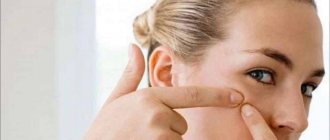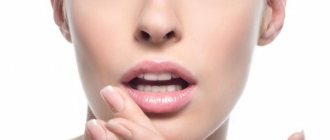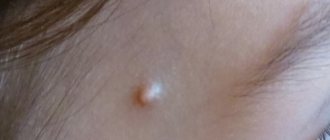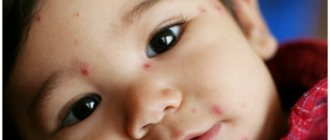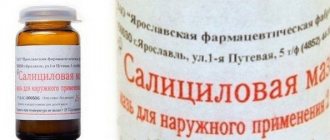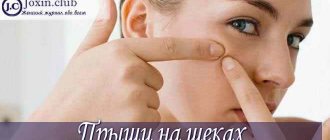What does wine do to your face? How diet and food habits wreak havoc on your skin - analysis by Dr. Nigma Talib, author of a book on premature skin aging and the consequences of our eating habits.
- Improper nutrition increases wrinkles and dulls the complexion.
- Naturopathologist and skin care specialist Nigma Talib gives tips on how to save your face.
- How cutting down on alcohol and sugar can improve some women's skin.
You've probably heard more than once that excessive consumption of cocktails makes your complexion pale and dull. Did you know that milk lattes may be responsible for dark circles under the eyes and spots on the chin? Or that chocolate can cause wrinkles on the forehead and between the eyebrows?
Dr Nygma Talib, who works with celebrities such as Sienna Miller and makeup guru Charlotte Tilbury, believes that food and drink have a direct, and sometimes immediate, negative impact on our faces, resulting in recognizable signs. The doctor defines them as “milk face,” “wine face,” “sugar face,” and “gluten face.”
“When a patient walks into my clinic, just by looking at a person’s face, I can tell what kind of foods they eat and what they overindulge in,” she says.
“I often find myself “reading” random faces on the street. Sometimes you want to walk up to a stranger and tell them to cut out dairy products in their diet or hold back on their favorite pasta, because you can tell by their face that their diet is harming them.
“For some people, eating too many grains for one day—eating cereal for breakfast or bread or pasta for lunch or dinner—is enough to cause bloating and puffiness.
Over the past ten years, Nygma has examined thousands of patients and is convinced that what you eat and the effect of foods on your gut health is fundamental to the skin of your face and its aging process.
“Any digestive problems when eating certain foods—perhaps you have an unknown food intolerance or you're eating more food than you can comfortably digest—cause a cascade of chemical and hormonal changes that accelerate the aging process internally and externally, with results that quickly show in your skin. face," she says.
Some food groups are particularly damaging: gluten (gluten-rich foods), dairy products, sugar and alcohol. Each harms the body in its own way, contributing to signs of skin aging such as blemishes, puffiness, changes in skin tone, premature wrinkles or loss of elasticity.
“The most vulnerable parts of the face - the forehead, chin, cheeks or eyes - are affected by the harmful effects on certain internal organs as a result of consumption of the so-called “stress food group”.
“It is impossible to make any general set of rules - the reactions of different people differ too much. Your best friend can drink a liter of milk without any consequences, while for you a piece of butter can provoke a rash on the chin, frustration and other “delights” of life.”
But you can identify your problem by reading your face and take steps to eliminate it or avoid, as much as possible, foods and drinks that cause cosmetic problems and contribute to premature aging.
Nygma shows what to look out for and what to do.
Causes of skin pain when touched
Painful attacks can be a consequence of migraine, which is accompanied by vomiting and weakness.
It can occur with damage to the cervical ganglion or the symptomatic plexus of the external carotid artery. The pain in this case can be localized in the upper jaw, in the eye sockets, nose on the bridge of the nose or temple. Blood pressure may be reduced, resulting in a headache. Charlene syndrome
In this case, the skin on the face hurts, as well as the eyeballs, nose, and acute pain begins in the orbital area. Most often this happens at night. The most common cause of this disease can be frontal sinusitis, ethmoiditis, lesions of the nasal turbinates, herpes and even a viral infection.
Sluder syndrome
This syndrome is characterized by pain at the root of the nose, in the upper jaw and around the eyes. The patient's nasal mucosa often turns red, and lacrimation, salivation, and sneezing may begin.
Frey's syndrome
Burning pain occurs mainly in the parotid and temporal parts. This unpleasant sensation can even occur while chewing. While eating, the patient may begin to sweat heavily and feel discomfort in the parotid area.
Neuralgia of the glossopharyngeal nerve
In this case, the pain is concentrated in the tonsils, at the root of the tongue, and at the back of the pharynx. This makes it difficult to swallow, the taste may change and the skin on the face hurts.
Ganglionitis of the superior cervical nodes
The pain in this case is paroxysmal in nature and lasts from a minute to a day. They are localized on the back of the head, in the area of the shoulder girdle, face and neck. When examined by a doctor, the following may be detected:
- drooping eyelid
- Constriction of the pupil
- Recession of the eyeball
- Sensory impairment
- Soreness
- Dental diseases
Sometimes such pain is long-lasting. They can radiate from the teeth along the entire length of the jaw, even extending to the shoulder blade. Also, pain on the face can be due to pulpitis, periodontal disease and dental prosthetics.
Frontitis and sinusitis
These diseases carry frequent complications, including facial pain, which can persist for a long time.
Temporal arteritis
Many of us have experienced when touching the skin of our face during a high temperature is very painful. This all happens due to hardening of the artery walls, then we begin to feel pain in the temporal part of the head.
Eye diseases
The skin on the face also hurts due to inflammatory processes in the eyes - this is interconnected and occurs due to optic neuritis. With the development of glaucoma, the face may also begin to hurt, and lethargy will occur, the eyes will become sour, vision will decrease and the eyelids will swell.
Gastrointestinal problems
Don’t be surprised, but pain on the face can occur as a result of diseases of the internal organs, including angina pectoris and stomach ulcers.
The skin hurts when touched - this may be evidence that a person has special sensitivity of the skin. Allodynia, as this disease is called, is divided into subtypes, where each has its own special pain sensations.
Experts divide the disease into the following groups:
- Statistical. This form manifests itself in the form of pain if you press hard or lightly touch the skin.
- Thermal. Discomfort appears as soon as the ambient temperature changes.
- Dynamic. Discomfort appears even if you simply put a piece of cotton wool on the skin or during light cleansing of the skin.
- Tactile. Pain occurs during light palpation or touching.
Few can imagine what a person whose skin hurts even with a light touch experiences. Often this may simply indicate hypersensitivity of the skin, but there is one simple way by which you can easily determine the presence of allodynia.
Previous burns can cause pain when touched
You need to take a small piece of cotton wool and let it fall freely onto the skin. Any discomfort that appears when touching the skin indicates the development of pathology, for example, allodynia. If you touch a piece of ice and feel discomfort, this is another sign of allodynia.
There may be several reasons for the development of this disease:
- Previously suffered burns. Prolonged exposure to ultraviolet radiation causes skin damage and increases sensitivity.
- Chickenpox contracted by a person can cause the development of the disease. Many will ask, what is the connection between these two ailments? The complex form of chickenpox affects the sensitivity of the skin. Shingles also causes blisters and rashes, after which touching these areas causes discomfort.
- Migraine. If migraine has caused the development of this disease, then even normal combing of hair can cause pain. Often patients with developing allodynia and migraines cannot wear jewelry. Any touch to the skin causes pain.
- Diseases of the nervous system increase sensitivity.
- Spinal pathologies that provoke damage to the spinal cord and disorders in the nerve endings are also the cause of special sensitivity of the skin.
- AIDS.
- Diabetes.
But there are a number of other pathologies that can cause pain when touching the skin.
Skin that hurts when touched is a signal indicating the following problems:
- Allergic manifestations when touching clothing fabric.
- Herpes virus. A burning pain syndrome manifests itself in areas of skin lesions. Various parts of the body may be affected.
Herpes virus
The skin hurts when touched - this indicates the presence of neurological disorders:
- Polyneuropathy. Discomfort when touching the skin can be caused by developing pathological changes in nerve fibers localized in the deep layers of the dermis.
- Demyelinating diseases. This is a whole group of ailments that cause disruption of the integrity of the myelin sheath of nerve endings.
- Fibromyalgia. This is a syndrome indicating chronic pain. In addition to the fact that the patient actively reacts to touching the skin, he also constantly feels tired and sleep-deprived.
Most of the ailments described above develop against the background of constant stress, lack or, conversely, excess of vitamins, hypothermia, colds and uncomfortable positions in which a person remains for a long time. Superficial pain also appears against the background of increased body temperature.
If fever appears during allodynia, this may indicate the development of such diseases:
- Staphylococcus. When the infection begins to actively spread throughout the body, the first reaction is fever, and only after that the skin begins to hurt. The cause of discomfort is inflammation, irritating the deep layers of the skin.
- Erysipelas. This is an infectious-allergic disease that affects the mucous membrane, skin, and lymph nodes. The first sign of the development of the disease is the appearance of a red spot that causes pain. Afterwards, fever, nausea, weakness and migraine may occur. Heat and pain when touching the skin may indicate the formation of boils.
The skin hurts when touched, for no apparent reason, this is the first signal to urgently seek medical advice.
What to do
As I already said, before dealing with painful pimples on the face, you need to find out why they pop up and, if possible, eliminate these causes as much as possible. This can be done faster and more accurately with the help of a specialist. I always recommend starting an intensive course of treatment with a visit to a cosmetologist or dermatologist.
READ ALSO: Spots on the back: photos, possible diseases, symptoms | Skin diseases
Diagnostics
A good doctor can already guess what the problem is by the appearance of the rash:
- Small white pimples are often hormonal in nature and may require medical correction of the background.
- A red rash, which can be painful and very itchy, often indicates the onset of chickenpox; it affects not only children, but also adults.
- Dense, painful subcutaneous pimples located in groups allow one to suspect furunculosis, especially if they appear repeatedly.
- A rash all over the body or strictly in certain areas, which occurs against a background of stress, indicates a manifestation of psychosomatics and sometimes turns into eczema.
- Small subcutaneous pimples, which then become inflamed, are often also colds.
You may have to undergo a short examination and tests to determine the most effective medications and procedures.
Pharmacy drugs
Taking antibiotics or hormone-containing drugs internally without consulting a doctor is, to say the least, unwise. If you choose the wrong medicine, the problem can only get worse, and some of them have serious side effects.
External means can and should be used:
- On a natural basis: propolis, ichthyol ointment, Vishnevsky liniment. They are practically harmless and have a minimum of contraindications. Therefore, they are even used to treat rashes in children and adolescents. They have an antiseptic and anti-inflammatory effect, draw out pus well, and promote rapid healing of wounds.
- With antibiotics: syntomycin, tetracycline, erythromycin and other ointments. They have a detrimental effect on certain types of microorganisms. They help get rid of ulcers faster, remove redness, inflammation and itching. There are many contraindications, you need to familiarize yourself with them before purchasing the drug.
- Essential oils. Used to cauterize single pimples or added to ready-made creams and lotions to more effectively cope with the rash. Golden Star balm with camphor and menthol relieves inflammation and pain well. In its pure form it is applied pointwise. Please note that some types of oils are strictly contraindicated during pregnancy and all of them can provoke severe allergic reactions.
- Sulfur chatter . It has the most direct effect on the activity of the sebaceous glands. It has an anti-inflammatory effect, relieves redness and flaking of the skin. It is harmless and has almost no contraindications. But it is ineffective against subcutaneous acne and boils.
- Alcohol tinctures and iodine. They are used in their pure form, point-by-point, to cauterize acne. At first, a strong burning sensation may be felt, but then the pain and inflammation quickly decrease. Use no more than 2-3 times a day to avoid causing severe skin burns.
During the period of intensive treatment, it is useful to replace ordinary toilet soap with tar soap. It also slightly reduces the activity of the sebaceous glands, has an anti-inflammatory effect, and creates unfavorable conditions for the proliferation of microbes.
Folk remedies
The effectiveness of folk remedies in the treatment of painful acne, especially subcutaneous acne, is very relative. Much depends on the nature and type of formations. But if there are few rashes and there is no suspicion of serious pathologies in the body, then you can try the following:
READ ALSO: Rash on the face and neck in newborns
Herbal infusions (chamomile, calendula, celandine, St. John's wort, coltsfoot, sage)
You can find several more effective ways to deal with subcutaneous acne at home in another article on our website. Remember that you should not squeeze deep-seated pimples. Not only may this leave a bruise or form a lump, but there is a risk that infection and pus will enter the bloodstream and cause sepsis.
What examination should I undergo?
This question is asked by many who have skin pain on their face. First of all, see a therapist and describe your symptoms in detail. Depending on your complaints, the doctor will prescribe an examination and will be able to objectively assess the complexity of the disease. The following tests are mainly prescribed:
- Blood analysis
- Possibly ultrasound
- Consultation with other doctors (ophthalmologist, dentist, ENT specialist, neurosurgeon and rheumatologist)
- Rheumatic tests
- X-ray
- CT scan
Why do subcutaneous acne appear on the face?
Painful bumps do not appear immediately. Their formation occurs gradually. First, a small lump appears under the skin. It doesn't hurt much, but it increases in size very quickly. At the next stage, an inflammatory process develops in the compaction, and the swelling becomes noticeably larger. The entire ripening period can last for several weeks.
Basically, the following reasons contribute to the appearance of such a problem as subcutaneous acne on the face:
- disruption of the natural outflow of sebum;
- blockage of the excretory channels by accumulating hardening sebum;
- active activity of pathogenic microorganisms;
- insufficient or improper hygiene;
- hormonal imbalance;
- disturbances in the functioning of body systems.
White subcutaneous pimples on the face
They can appear in both adolescents and adults. Basically, the problem is preceded by hormonal changes that contribute to the development of the inflammatory process in the sebaceous glands located deep under the skin. But sometimes white subcutaneous pimples cause other causes. Such, for example, as:
- use of low-quality cosmetics;
- improper diet;
- lack of vitamins and minerals in the body;
- change in climatic conditions.
Red subcutaneous pimples on the face
Internal pimples are inflamed areas of the epidermis that swell, their size increases, and as a result, the tubercle begins to rise above the surface of healthy skin. Painful subcutaneous acne on the face appears due to:
- hormonal imbalances;
- insufficient facial skin hygiene and the use of low-quality cosmetics;
- allergies;
- subcutaneous mite activity;
- increased sweating;
- diseases of the gastrointestinal tract;
- disorders of the immune system.
In men, red subcutaneous pimples on the face can occur after shaving if basic hygiene rules are not followed. Inflammations may not transform into purulent pustules for a long time, causing itching and other discomfort. If the cause of the problem is subcutaneous mites, pimples form in groups. In this case, the formations are painted bright red, and peeling is added to the main symptoms.
Subcutaneous pimples on the forehead - causes
Formations on the forehead are formed according to the same principle as on any other part of the face or body. Sebum, mixing with particles of sweat and dust, clogs the glands. The secretion produced by the latter cannot come out and is collected in the sebaceous ducts. A favorable environment is created for the proliferation of pathogenic microorganisms, and the inflammatory process begins.
Large and small subcutaneous pimples on the face often occur due to improper care of the epidermis. The formation of a rash is also influenced by the choice of cosmetics: some products dry out the face, while others over-moisturize it. If subcutaneous pimples suddenly appear on your face, it won’t hurt to pay attention to your diet - fatty and spicy foods contribute to the accumulation of sebum. Sometimes blockage of the sebaceous glands and inflammation occur against the background of malfunctions in the gastrointestinal tract: liver, stomach, pancreas.
Subcutaneous pimples on the cheeks - causes
As a rule, the cause of rashes on the cheeks is a metabolic disorder. By this part of the face you can determine how correctly the excretory system works. Often, a rash appears due to intestinal diseases. For many, deep subcutaneous acne on the face is formed due to poor diet or bad habits. In addition, tubercles occur when:
- hormonal imbalances;
- infection with staphylococcus;
- dysbacteriosis;
- helminthic infestations;
- Helicobacter infection.
Subcutaneous acne on the chin - causes
All of the reasons described above can cause a rash on the lower part of the face. In addition, subcutaneous small pimples on the face in the chin area are the result of bad heredity. And in some cases, formations indicate improper functioning of the genitourinary and reproductive systems:
- If subcutaneous acne appears on the face near the base of the lower lip, it is worth checking the small intestine.
- A rash with redness, dryness and peeling often indicates functional disorders of the left ovary.
- Pimples with age spots are signs of improper functioning of the inguinal lymphatic system.
- For rashes concentrated in the center of the chin, the cause of the problem should be sought in the uterus or prostate gland.
Less common causes of skin pain
Often the appearance of skin pain is the first symptom of skin diseases.
Let's look at why your skin may still hurt:
- Disease of internal organs. It may seem that the skin on the back hurts for no apparent reason, but pleurisy, pathologies of the stomach or liver can provoke the appearance of pain.
- Digestive disorder. Flatulence is accompanied by bloating of the abdominal wall and pain in the abdominal skin appears due to overstretching of the epidermis.
- Melanoma. A dangerous sign is when a spot on the skin grows and hurts. This indirectly indicates the appearance of a malignant process in the mole.
- Allergy. Skin rashes appear after contact with an allergen and are accompanied by itching and pain.
Less commonly, the cause of skin pain is neurosis or chicken pox.
For what reasons does the skin on your face hurt?
Our face is connected to the trigeminal nerve. Sympathetic innervation comes from segments of the spinal cord, from where fibers go to the superior cervical ganglion. Some of them reach the pterygopalatine, ciliary, submandibular, sublingual and ear nodes, where they branch and are interrupted in the tissues of the face.
Nerve ganglia are complex formations - a reflex peripheral center, which includes sensory and motor cells. Any pathology can cause pain in the facial area.
Most often the skin on the face hurts for the following reasons:
- Trigeminal neuralgia
- Damage to nerves with sensory fibers
- Vascular disorders (migraine, temporal syndrome)
- Damage to autonomic innervation
- Prosopalgia with depression or diseases of internal organs
How to get rid of facial pain?
Most importantly, do not self-medicate and do not miss the progress of the disease. Anticonvulsants and anti-inflammatory drugs are prescribed to treat neuropathic pain. Most often they are taken as part of complex treatment (based on examination results).
For migraines, it is possible to take analgesics on your own, and to treat the disease at the neuralgic level, manual therapy and acupressure, as well as physiotherapy, antidepressants and psychotherapy are prescribed.
When to go to the doctor
If the skin on your stomach, back, or limbs hurts, then consulting a specialist will not be superfluous. It is better to immediately find out what the reason is and prevent the development of serious pathologies. Such a symptom cannot be treated negligently, as it may indicate severe disorders in the body that require serious and long-term treatment.
When pain appears on the skin, a person is lost and does not know what to do. But the condition that has arisen is not life-threatening and it is worth analyzing the symptoms that have arisen:
- My face hurt after hypothermia. Most likely, the skin is chapped and softening masks will help.
- It hurts under the skin. This may be a sign of a tactile disorder and you should visit a neurologist.
- The appearance of skin pain is accompanied by rashes - you should consult a dermatologist.
- When the birthmark hurts and grows, a visit to the oncology clinic will be required.
- Pain when touched or rubbed by clothing occurs with allodynia.
Sometimes it is difficult to determine on your own how the skin hurts and why the symptoms arose. But if the pain persists for a long time or occurs frequently, then it is worth visiting a doctor. If there are no changes in the skin, and the pain does not go away for a long time, then the examination should begin with a visit to a neurologist. If necessary, the doctor will prescribe a consultation with other specialists.
Methods for treating subcutaneous acne
A large subcutaneous pimple is a serious problem . It will take a long time to fight it, because ripening without human intervention occurs only after 1-2 weeks.
During this entire period, you cannot apply pressure or use any means, as their impact will most likely lead to unpleasant consequences.
This is especially dangerous because the place where such acne most often appears is the forehead, nose and chin, so the face is least protected from its terrible effects.
What treatment methods are available to the population:
- medications,
- folk remedies.
Both options should be taken equally seriously . Each person has their own microflora in the body, so it is impossible to predict in advance which actions will be most effective.
It is most practical to consider both methods in detail, revealing their subtleties.
Medications
Medications are the best way to eliminate the problem. Yes, some women prefer folk remedies, but it’s still easier to take the advice of a doctor or pharmacist.
Just don’t consider expensive drugs reliable; in some cases, affordable ointment is much more useful.
What names are worth remembering?:
- ichthyol ointment,
- Vishnevsky ointment,
- Levomekol.
Each of the remedies is aimed at eliminating the source of inflammation. Accordingly, they should be applied around the affected area , without allowing them to get under the skin.
If you turn to common creams and gels offered by foreign manufacturers, you will have to face a misinterpretation of the problem.
Expensive gels are not medicines . For the most part, they are focused only on eliminating the resulting lesion, removing redness and hiding the internal abscess.
If you want to completely get rid of acne, you cannot go the easy way; you will have to remove it for a long time and carefully step by step.
Also, some experts advise using any remedy for allergic reactions , for example, Fenistil.
If the cause of the pimple is any third-party irritants, the effect will appear as soon as possible.
Such a non-standard approach to the problem is beneficial in different cases, so you should not abandon it.
Diagnosis of skin pain
Before you seek help from a doctor, you need to prepare. Remember exactly when the pain when touched appeared, what preceded the appearance of such a symptom, what illness was suffered, and whether there was an injury. It is easier to deal with the problem if it appears after visiting a solarium or if the patient has been in the sun for a long time.
In this case, you need to give up all forms of tanning and all symptoms will disappear. If the body hurts and there is a fever, then you need to remember which of the symptoms appeared first. If the temperature appears after pain, then erysipelas may begin or purulent processes will soon appear.
If a boil forms, redness and thickening initially appear, and a rash appears after 3 days. If a person initially fell ill, and then pain appeared when touched, then this may be due to an infection developing in the body.
It just so happens that modern medicine has to carry out various diagnostic methods to find out what caused the discomfort when touched. Allodynia is a little studied disease. Therefore, it is not always clear what exactly caused it, what diagnostic methods to use in order to select an effective treatment.
It's time to eliminate subcutaneous pimple
Having ruled out the recurrence of acne, it’s time to think about how to remove a subcutaneous pimple .
It will not disappear on its own, but will only spread, spoiling the appearance more and more every time.
You can contact a cosmetologist , but it’s easier to use a few tips right at home. They will allow you to cope with an unpleasant formation without outside help:
- Under no circumstances should you crush such an eel.
- first it must be fully ripe,
- It is better to use proven means.
Modern methods suggest the possibility of purchasing this or that product in a store, but this is not the best solution.
Usually they turn out to be unverified, which in some cases leads to a worsening situation. There are cases where improper treatment led to blood poisoning , so do not overdo it.
Preventing skin pain
In order to prevent the development of such a symptom as pain when touching the skin, it is necessary to be examined by a doctor in a timely manner.
And also monitor your health:
- treat infectious and viral diseases at the first symptoms;
- avoid hypothermia;
- avoid stressful situations;
- take medications that lower blood sugar levels on time if diabetes has been diagnosed.
Avoid stressful situations
It is always better to prevent a disease than to treat it in the future, especially if complications have already begun.
painful
more _
significant
adj.
a) Susceptible to diseases, often sick.
b) Caused by disease, indicating illness.
a) Causing physical pain.
b) Caused by pain, indicating pain.
a) Causing mental pain and suffering.
b) transfer Excessively exaggerated, going beyond the normal, ordinary.
+ PAINFUL
— S.I. Ozhegov, N.Yu. Shvedova Explanatory dictionary of the Russian language
Methods for treating skin pain
If skin pain is constantly observed, then you should definitely seek advice from a specialist. All organs in the human body work as one single mechanism, and if one fails, then all systems suffer. Initially, you will need to visit a therapist.
He will analyze the situation, find out what preceded the appearance of such a symptom, and then can recommend consultations with other specialists: a psychotherapist, a neurologist, a dermatologist and an allergist.
Vascular diseases that can lead to skin problems
Each specialist can prescribe his own treatment:
- Your doctor may prescribe painkillers if the pain is severe.
- A dermatologist monitors the patient if the pain is caused by the development of dermatological pathology. Prescribes external remedies depending on the type of illness.
- An allergist observes the patient if the allergic reaction is severe. Prescribes antihistamines. Identifies and eliminates the allergen.
- A neurologist observes a patient for vascular and nervous system diseases. He may recommend drugs that act on blood vessels, with a sedative effect, diuretics and neurostimulants.
- A psychologist helps if mental disorders are observed.
In addition to taking medications, specialists may recommend a course of reflexology, physiotherapy, and acupuncture. Sometimes sessions with a psychotherapist are recommended.
Traditional medicine has long been used to relieve pain.
Garlic tincture
There are several good recipes to help relieve pain that occurs when touching the skin:
- Garlic tincture. It needs to treat the skin at the site of pain. To prepare it you will need to take 1 tsp. garlic juice and pour 1 tbsp. vodka, leave for 7 days. Wipe the painful area.
- Willow bark tincture. You need to take a small piece of bark and break it finely, pour in 2 tbsp. boiling water, put on fire and boil. Leave until completely cool, drink 1 tbsp. l. three times a day.
Before using traditional methods, consulting a doctor will not be superfluous.
The skin hurts when touched, this is a serious signal to start treatment. In addition to taking medications, a specialist may recommend physiotherapeutic procedures and reflexology. If the cause is in the spine, then physical therapy will do, but without intense exercise.
Therapeutic baths
There are other methods:
- Therapeutic baths. They can be coniferous or herbal. The duration of the procedure is up to a quarter of an hour, they are taken three times a week. The water should be warm, but not hot. This regimen will help to relax the muscles well and relieve pain. To prepare a pine bath, you need to take a couple of pine branches and boil them in 8 tbsp. water 30 minutes. For one bath you will need 2 tbsp. decoction To prepare a herbal decoction, you will need to take equal amounts of nettle, chamomile, calendula and sage. Pour 2 tbsp. l. collection 8 tbsp. water.
- Physiotherapy. It helps relieve pain and spasms and improve blood flow. The doctor may recommend one or several methods at once: massage, exercise therapy, dynamic currents, magnetic, laser, light or kinesitherapy. The duration of the procedure and treatment is selected individually after determining the cause of the pain.
Main reasons
Provoking factors for small red pimples or small multiple pustules are most often external: failure to comply with basic hygiene rules, abuse of decorative cosmetics, use of low-quality or unsuitable skin care products. Lack of treatment can lead to the development of the second stage of anke - its papulopustular form.
READ ALSO: Natura Siberica Foaming Cleansing Mousse - “An excellent product for combination skin; video on caring for problem skin! » | Customer Reviews
Often popping up, especially multiple subcutaneous pimples, painful in various parts of the face and body, may have causes that indicate serious problems in the body that cannot be ignored:
- severely weakened immunity;
- the presence of viruses or infections in the blood (syphilis, staphylococcus, HIV);
- exacerbation of chronic diseases;
- disruptions in the endocrine system;
- intestinal problems;
- general intoxication of the body.
But not all people with the health problems listed above have painful acne on their face. Lifestyle and external provoking factors also play a significant role.
Medications
To eliminate pain that occurs when touching the skin, a specialist may recommend taking analgesics:
- Metamizole. This is the well-known Analgin. One of the best pain relievers. The drug is popular due to its high effectiveness and low price. Available in the form of tablets and solution for injection. Take the drug for pain, 1-2 tablets three times a day. The course of treatment is determined by a specialist. Price from 24 rub.
- Paracetamol. This is an analgesic and antipyretic drug. Used to quickly relieve any type of pain. Take the drug an hour after meals, 0.5-1 g. The maximum dose per day is up to 4 g. The duration of therapy is determined by the doctor. Price from 20 rub.
The doctor may recommend non-steroidal inflammatory drugs to relieve pain:
- Nise. Sold in powder and tablets. The medicine effectively relieves pain and inflammation. For pain, you need to take the drug twice a day, 100 mg. The dose per day should not exceed 400 mg. The course is determined individually for each patient. Price from 170 rub.
- Ketoprofen. Available in tablet form, as well as solution for injection. The medicine is effective for any manifestation of pain. When taking the drug, the dose is determined by a specialist. Self-administration is allowed at a dose of 30 mg per day for no more than two weeks. Price from 55 rub.
Pain occurs when touching the skin, and you may need to take anticonvulsants to help relieve tension on smooth muscles and small blood vessels:
- Diazepam. Presented in tablet form, solution for intramuscular and intravenous administration. It has a sedative and anticonvulsant effect on the body. It is recommended to take it for neuroses, feelings of anxiety and restlessness, and sleep disturbances. The single dose, frequency and duration of administration are determined individually. Price from 250 rub.
- Carbamazepine. Sold in tablet form. The drug has antiepileptic, neurotropic, psychotropic and antidiuretic effects. The standard starting dose is 100-200 mg twice daily. In each individual case, an individual course of treatment is selected. Price from 140 rub.
If your skin hurts, a specialist may recommend taking antidepressants:
- Azafen. It is a tricyclic antidepressant with sedative activity and anxiolytic action, available in tablet form. The initial dose is 25-50 mg in 2 divided doses. The optimal daily dose and course are selected individually. Price from 170 rub.
- Afobazol. It is a selective non-benzodiazepine anxiolytic. The drug increases the bioenergetic potential of neurons, restores and protects nerve cells. The optimal single dose is 10 mg, daily 30. Price from 350 rubles.
If you do not get rid of insomnia or stabilize your mental state, the patient’s condition will only worsen, so the doctor may prescribe sedatives:
- Valerian. Available in the form of a sachet for brewing or in the form of an alcohol tincture. Helps normalize sleep, reduces nervous excitability. Take valerian three times a day. Price from 25 rub.
- Novo-Passit. Sold in tablet form and tinctures. The composition of the drug is natural, it includes valerian, hops and lemon balm. Recommended for use in cases of anxiety, fears and worries. The course and dose are selected individually. Price from 180 rub.
The doctor must select a drug from any group, and in the future he will control the therapy process.
Features of care for dull skin
You can return a healthy, radiant look to your face by changing your usual lifestyle and taking better care of your skin. General recommendations concern regulation of the daily routine (sufficient sleep, increased physical activity, long walks in the fresh air, etc.); reviewing the diet towards a balanced and fortified diet; giving up bad habits. It is important to learn how to choose the right creams and cosmetics for the face, taking into account your age and skin type, and do not forget about protecting your skin from ultraviolet rays using products with SPF 30 and higher. Daily home skin care should consist of cleansing, toning and moisturizing. For dull complexion, deep exfoliation of the epidermis should be carried out at least once a week using
PAINFUL, painful, painful; painful, painful, painful. 1. only full. adj. to illness. Painful condition. || Prone to disease, unhealthy, frail. Sick child. Sick woman. || Coming from a disease,... ...Ushakov's Explanatory Dictionary
PAINFUL, oh, oh; znenna, znenna. 1. Arising from illness, prone to illness, unhealthy. B. blush. B. view. B. child. 2. transfer Unnatural, abnormal, excessive. Painful pride. 3. Causing pain. B. injection. | noun... ... Ozhegov's Explanatory Dictionary
painful
- SICK1, martyr, suffering SICK2, sick, unhealthy, fragile, weak, frail, decomposed. flimsy, loose stunted, decayed reduction dead, decomposed reduction cool, colloquial reduction sick ... Dictionary-thesaurus of synonyms of Russian speech
painful
- terribly painful... Dictionary of Russian Idioms
Adj. 1. ratio with noun pain, illness, associated with them 2. Susceptible to diseases; often sick. Ott. Caused by illness, indicative of illness. 3. Causing physical pain. Ott. Caused by pain, indicating pain. 4. transfer ... Modern explanatory dictionary of the Russian language by Efremova
Painful, painful, painful, painful, painful, painful, painful, painful, painful, painful, painful, painful, painful, painful, painful, painful, painful, painful,... ... Forms of words
Healthy... Dictionary of antonyms
painful
- painful; briefly form nen, nenna ... Russian spelling dictionary
painful
- cr.f. more/zen, more/zenna, nenno, nenna; more/more ... Spelling dictionary of the Russian language
Books
- She. Diary of an eighth-grader, Vladilen Eleonsky. A sickly teenager is unrequitedly in love with an athlete classmate, his classmates laugh at him, but his sickness leads him to discover abilities that cause... e-book
- Evgeny Turvinenko. Painful abandonment of the first business and the unexpected opening of a new business, Vladimir Marinovich. Today Vladimir Marinovich, founder of the UP Business School vverh. tv, interviews Evgeniy Turvinenko, serial entrepreneur, creator and director of the Express Mirror and Jay's companies...
Synonyms:
weak, frail, frail, flimsy, stunted, dead, ailing, weak; unhealthy, sick; suffering, martyr; barely a soul in the body, unnatural, twisted, inferior, inadequate, weak, fragile, everything sticks, ugly, not a survivor in this world, poor health, what the soul holds on, fragile health, prone to diseases, what only the soul holds on, barely breathing, untenable, pathological, defective, excessive, anomalous, abnormal, staggers from the wind, all diseases stick, staggers by the wind, damp, manic, loose, perverted, sick, painful, abnormal, wrong, unnatural

